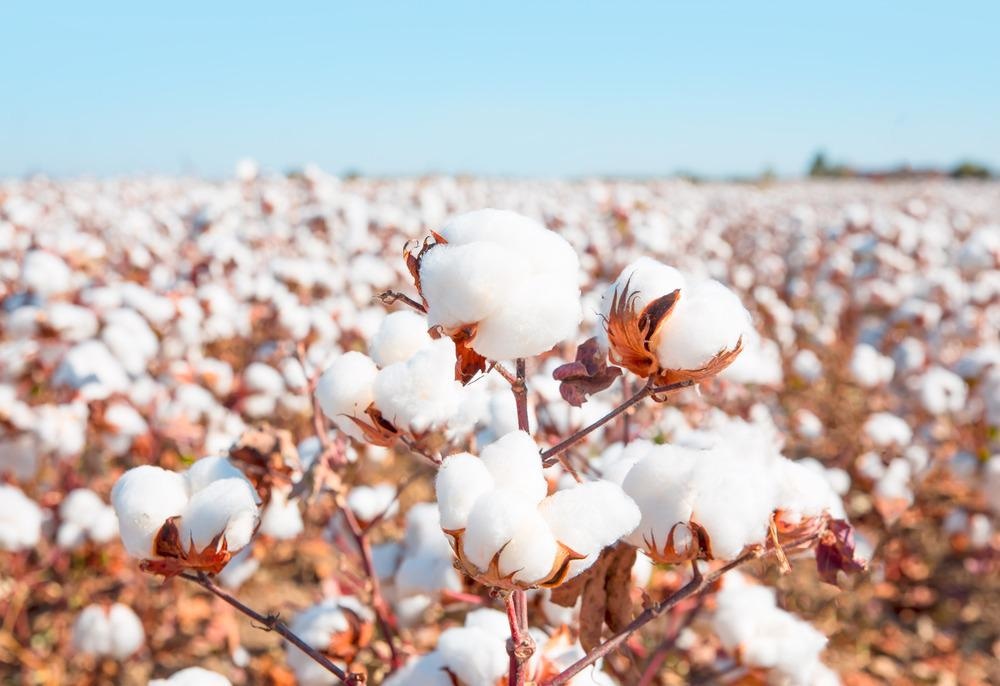In a recent study published in the Journal of Hazardous Materials, researchers developed an eco-friendly dye absorbent for cotton fibers by coating poly(2-(dimethylamino) ethyl methacrylate-co-4-acryloyloxybenzophenone) (P(DMAEMA-co-ABP)) and embedding silver (Ag) nanoparticles (NPs).

Study: CO2-responsive functional cotton fibers decorated with Ag nanoparticles for “smart” selective and enhanced dye adsorption. Image Credit: muratart/Shutterstock.com
The prepared PCCF/Ag synthetic fiber exhibited excellent maximum adsorption capacities of 1538.5 mg g−1, 944 mg g−1, 415.6 mg g−1 for methyl orange (MO) anionic dye, methylene blue (MEB) cationic dye, and neutral red (NR) cationic dye, respectively.
In addition to possessing antibacterial properties, it exhibited a 91% adsorption capacity retention after 10 cycles. Moreover, the CO2 sensitivity enhanced the anionic dye selectivity compared to cationic dye.
Organic Dye Extraction from Waste Water
Organic Dyes (OGs), which are the base of all the vibrant colors used in the textile and cosmetic industry are a major source of water pollution.
These are highly toxic, non-biodegradable, carcinogenic, and mutagenic for humans and aqueous organisms.
Some common methods to remove them from wastewater include adsorption, catalysis, filtration, oxidation, and ion exchange. Moreover, CO2-sensitive physicochemical characteristics of absorbents to increase absorption affinity towards anionic dyes is a beneficial tuning switch for flexible selectivity and absorption rate in diverse wastewater flow conditions.
Additionally, they neither need any chemical reagents to return them to their initial absorption selectivity state and absorption rate nor produce any byproducts, which makes them a promising eco-friendly, cost-effective, and reusable material.
Furthermore, Ag NPs are excellent anti-bacterial and inert metals for the removal of cationic and anionic organic dyes such as brilliant green (BG) cationic dye, Rhodamine B (RB) cationic dye, malachite green (MG) cationic dye, Congo red (CR) anionic dye, MO, NR, and MEB.
Owing to their noble property, these are suitable for wastewater with a very large pH value range of 2-11.
About the Study
In this study, researchers dip-coated a CO2-sensitive polymer absorbent, P(DMAEMA-co-ABP), on cotton fiber and embedded it with in-situ-grown Ag NPs.
Firstly, P(DMAEMA-co-ABP) was synthesized via the free-radical polymerization of 2-(dimethylamino) ethyl methacrylate (DMAEMA) using CO2 sensitive 4-acryloyloxybenzophenone as the photo-crosslinking monomer and 2,2-azobisisobutyronitrile (AIBN) as the initiator in the 1,4-dioxane solvent.
Then it was purified and diluted in a 3 wt% tetrahydrofuran (THF) solvent for dip coating of cotton fiber.
Subsequently, the prepared synthetic cotton fiber, PCCF, was embedded with Ag NPs using AgNO3 aqueous solution and NaBH4 reducing agent. Finally, the adsorption isotherm, capacity, and rate were evaluated using the Langmuir and Freundlich, pseudo-first-order kinetic, and pseudo-second-order kinetic models.
Observations
The successful synthesis of CO2-sensitive polymer, P(DMAEMA-co-ABP), is evidenced from the 1724 cm−1 peak of easter bond (−O−C=O) in the FT-IR. The XRD patterns revealed a well-preserved cellulose crystal structure of cotton fiber even after the copolymer coating and Ag NPs growth.
The adsorption capacities of PCCF/Ag without CO2 stimulation for anionic dyes were 403.5 mg g−1, 429.0 mg g−1, and 663.6 mg g−1 for MB, MO, and CR, respectively.
Similarly, it was 543.8 mg g−1, 696.9 mg g−1, 325.1 mg g−1, and 378.0 mg g−1 for MG, MEB, RhB, and NR, respectively.
This indicated that the affinity of the prepared PCCF/Ag towards cationic and anionic dyes was almost similar in the absence of CO2 stimulation.
However, in the presence of CO2, the adsorption capacities for anionic dye increased drastically to 894.6 mg g−1, 1477.8 mg g−1, and 1626.4 mg g−1 for MB, MO, and CR, respectively.
The adsorption capacity of PCCF/Ag increased for anionic dyes with a decrease in pH value, whereas it decreased for cationic dyes with a decrease in pH value of the wastewater. Also, it exhibited a 91% adsorption capacity retention after ten cycles owing to effective regeneration of zeta-potential.
Conclusions
In summary, the researchers of this study synthesized an eco-friendly, reusable, and cost-effective synthetic cotton fiber PCCF/Ag composite for the removal of ionic organic dyes from wastewater.
The in-situ-grown Ag NPs and CO2 sensitive polymer, P(DMAEMA-co-ABP), demonstrated excellent pH-sensitive absorption capacity to both cationic and anionic dyes.
However, in the presence of CO2 stimulation, PCCF/Ag demonstrated drastically increased affinity towards anionic dyes, only. Hence, PCCF/Ag with its tunable absorption affinity is a promising material for the extraction of metal ions and ionic dye from diverse wastewater flow conditions.
Reference
Yang, L., Shang, J., Dou, B., Lan, J., Zhang, C., Zou, R., Xiao, H., Lin, S., (2022) CO2-responsive Functional Cotton Fibers Decorated With Ag Nanoparticles for “Smart” Selective and Enhanced Dye Adsorption, Journal of Hazardous Materials. Available at: https://www.sciencedirect.com/science/article/pii/S0304389422001157?via%3Dihu
Disclaimer: The views expressed here are those of the author expressed in their private capacity and do not necessarily represent the views of AZoM.com Limited T/A AZoNetwork the owner and operator of this website. This disclaimer forms part of the Terms and conditions of use of this website.